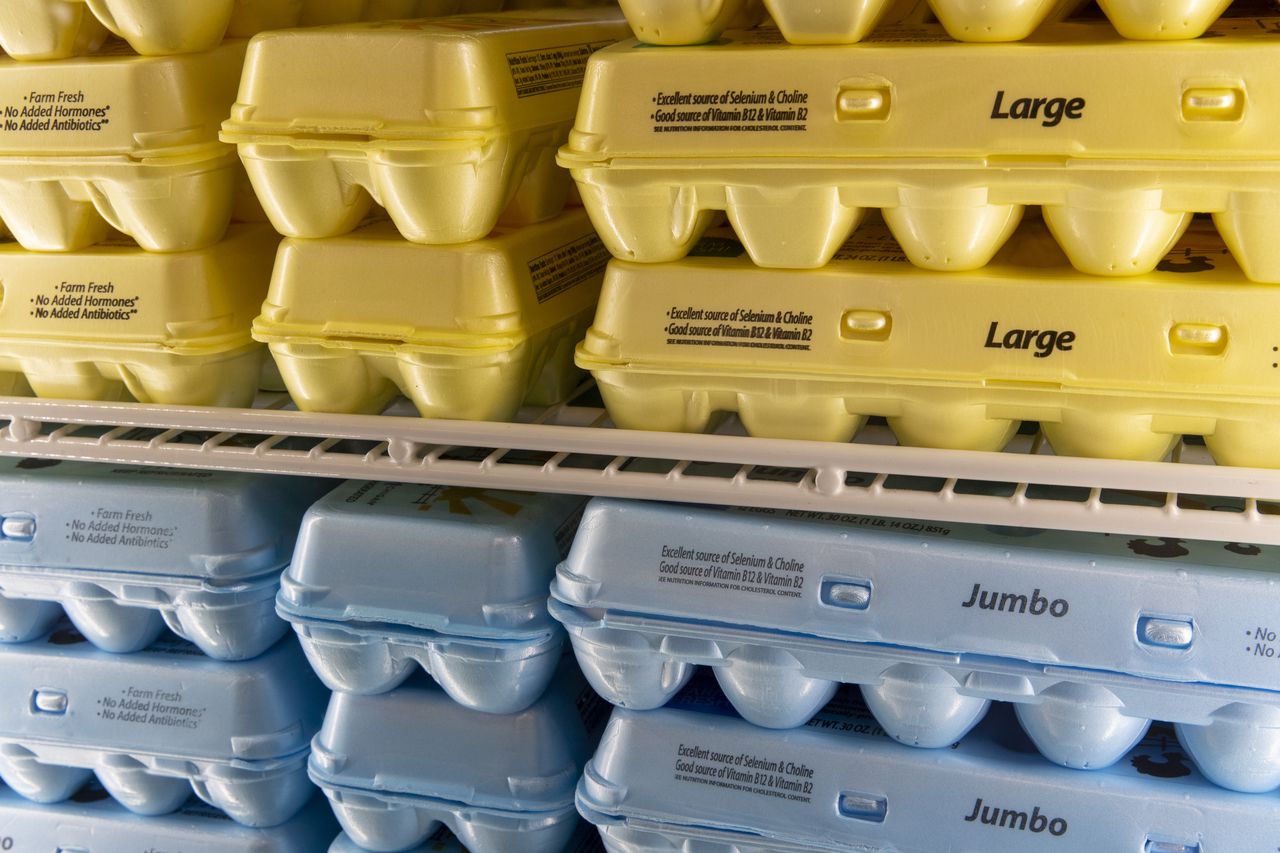Bird flu killed millions: Eggs now cost nearly 50% more
Grocery costs are up, but it’s eggs that are raising eyebrows.
Egg prices in general have jumped 49% in a year with some shoppers paying upwards of $5 a dozen. And latest U.S. Bureau of Labor Statistics data show Grade A large eggs went from an average of $1.72 in November 2021 to $3.59 in November 2022.
By comparison, grocery prices increased 12% overall last year.
“That’s the highest increase in any one food category at the grocery store. It’s pretty stark when you see those price increases,” said David Ortega, a Michigan State University food economist.
Can’t see the chart? Click here.
Shoppers are feeling the pain of high egg prices more than other groceries because they’re a “known value item.” Ortega says like a gallon or milk or a loaf of bread, people know the price of eggs when they go to the store.
“This is something that consumers are noticing and may be adjusting their buying behavior to compensate,” he said.
The main culprit: a deadly bird flu.
Related: What you need to know about avian flu in Michigan
A record outbreak of a highly contagious avian flu ripped across the globe last year with major egg producers in the United States losing millions of birds. Infected flocks were “depopulated” to contain the spread of the virus.
As a result, nearly 58 million birds, including more than 40 million egg-laying hens, died across the country, according to the U.S. Department of Agriculture.
More than 300 commercial flocks have been hit by the flu at farms in Iowa alone. The top egg producing state lost 14 million egg-layers. It impacted another 411 backyard flocks, the USDA reported.
“By and large, it’s the supply shock that’s leading to these increased prices,” Ortega said.
The flu first hit the United States in January with cases taking off in the spring. But another wave hit more than 5 million birds in Iowa, Nebraska, South Dakota and Colorado late last year, according to the USDA.
This outbreak has surpassed a 2015 avian flu that killed 50 million birds and led to a spike in egg prices.
“But not to the level we’re seeing now,” Ortega said.
Related: A chicken started gasping for air. Three days later, more than 60 birds were dead.
Other inflationary pressures like energy, transportation and feed costs have also pushed up prices in addition to high demand coming out of the holiday season.
A weekly egg market report from the Department of Agriculture shows Midwest wholesale prices ranged from $4 to $5 a dozen during the first week of January. But Ortega says these weekly prices tend to fluctuate as costs vary depending on the retailer, the type of egg and the region.
“Some people might be able to find eggs locally, cheaper from backyard suppliers,” he said.
It’s likely prices will stay high until the flu is contained.
“I foresee that we’ll see a sustained period – a period in the short term at least – of sustained elevated prices,” Ortega said.
In November, the U.S. Centers for Disease Control continued to release guidance on how to prevent infection between birds.
For those who are around poultry or wild birds, this includes wearing personal protective equipment, washing hands frequently, avoiding touching your mouth, nose or eyes and changing clothes after being in contact with birds.
It remains rare for humans to be infected with avian flu.
